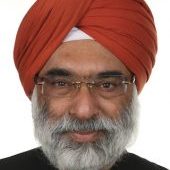Asia: The Quad’s Pivot to ASEAN
Providing a soft power alternative to China, in Southeast Asia
October 4, 2021

The creation of AUKUS – an ‘anglosphere’ defense partnership between the United States, United Kingdom and Australia – has taken away some of the attention from new developments in the other geostrategic grouping active in the Indo-Pacific region: the Quad.
Comprising two members of AUKUS, the United States and Australia, in addition to India and Japan, the Quad is stepping up its activities as a response to China’s increasing clout.
The Quad’s new agenda
The grouping has already met twice this year, most recently in late September, when U.S. President Joe Biden hosted the leaders of all the participating countries in Washington, D.C.
Demonstrating a new commitment to the group’s agenda, the Quad announced a creative partnership in connectivity and infrastructure. Emerging technologies, climate action, education and responding to the pandemic are significant components. These include collaboration on vaccines and the developing of resilient supply chains.
The ASEAN angle
A less highlighted but significant aspect of the Quad summit was its articulation of a strategy directed at the ten Southeast Asian countries of ASEAN.
The joint statement released at the end of the summit underscored the Quad’s “dedication towards working with ASEAN and its member states – the heart of the Indo-Pacific region – in practical and inclusive ways.”
Such an acknowledgement of ASEAN and the crucial role it plays in the Indo-Pacific has not been heard from the Quad before.
Separating military and civilian engagement
Another significant change is that the military dimension of the Quad is deliberately being disconnected from the grouping’s other focal points of interest.
Going forward, the Malabar exercises will be formally separated from regular Quad activities. These exercises involve the navies of the four Quad nations and are a cornerstone of the interoperability of the Quad forces.
Allaying anxieties
The motivation for this change is to allay anxieties in ASEAN. It allows for the Southeast Asian nations to deepen their engagement with the Quad, free of worries that they might become entangled in a military alliance. The latter is something they are wary of.
In a further attempt to reduce anxieties in the region, the Quad also reaffirmed its support for the ASEAN Indo-Pacific outlook, which is notably non-combative. It steers clear of openly treating China as an adversary.
Climate, Covid and critical tech
Besides these assuaging tactics, the Quad announced a robust policy of collaboration with ASEAN. Three sectors were the focus: climate, Covid and critical technologies. Adding space, cyber security and the development of resilient supply chains to their agenda is part of the effort to build a high-quality partnership with ASEAN.
Initiatives on building infrastructure and developing semiconductors, 5G rollout and vaccinations are the tools that the Quad is devising to strengthen the Indo-Pacific region’s economy.
Vaccinations at the fore
For this strategy to succeed, it is clear to the Quad that harnessing ASEAN as a partner will be crucial. However, this does not mean that ASEAN will be inducted as a formal member of the Quad. Instead, its members will be offered the benefits of emerging collaboration.
Of immediate interest should be the vaccine production project based in India as part of a Quad initiative. By 2022, 1.2 billion doses of these Indian-produced vaccines are expected to be shared with the Indo-Pacific region.
Japan has offered $3.3 billion in loans to support the initiative. In addition, Australia is offering $219 million for last mile vaccine distribution in the region. India will finance 500 million doses. All these resources will directly benefit ASEAN countries.
The Quad has offered to coordinate with the ASEAN secretariat towards the distribution of vaccines. This is the first time the two groupings will work directly together.
Infrastructure
In what is arguably the Quad’s riposte to China’s Belt and Road initiative, a Quad Infrastructure Coordination Group is in the process of being formed. Since 2015, Quad countries have provided nearly $50 billion for developing infrastructure in the region, covering 30 countries, including those in ASEAN.
The Quad infrastructure partnership proposes to bring in more private sector investment into the region. It is likely they will look for ways to facilitate ASEAN’s own Master Plan on Connectivity 2025.
Reducing dependence on China
The Quad’s initiatives are an alternative for nations who are attempting to reduce their dependence on China. There are already concerns in the region that China is curbing its nascent innovation and private sector initiative. The Quad could provide alternative options for collaboration between leading entrepreneurs and business houses in Southeast Asia and Quad-member nations.
Going forward, the Quad’s annual summit and annual foreign ministers meeting could very likely be held on the sidelines of major regional events like the East Asia Summit (EAS). All four Quad countries are members of the EAS and have dialogue partnerships with ASEAN.
Conclusion
The Quad is not seeking to draw ASEAN into any direct confrontation with China. Instead, it is using soft power to present an alternative to the countries of the Southeast Asian region for their future development. This will only enhance rather than constrict the strategic autonomy of ASEAN.
Takeaways
The Quad is stepping up its activities in the Indo-Pacific region as a response to China’s increasing clout. One aspect is a new strategy directed at the ten Southeast Asian nations of ASEAN.
The Quad is not seeking to draw ASEAN into any direct confrontation with China. Instead, it is using soft power to present an alternative for the future development of the region.
In what is arguably the Quad’s riposte to China’s Belt and Road initiative, a Quad Infrastructure Coordination Group is being formed.
By 2022, 1.2 billion doses of Covid vaccines produced in India are expected to be shared with the Indo-Pacific region.

